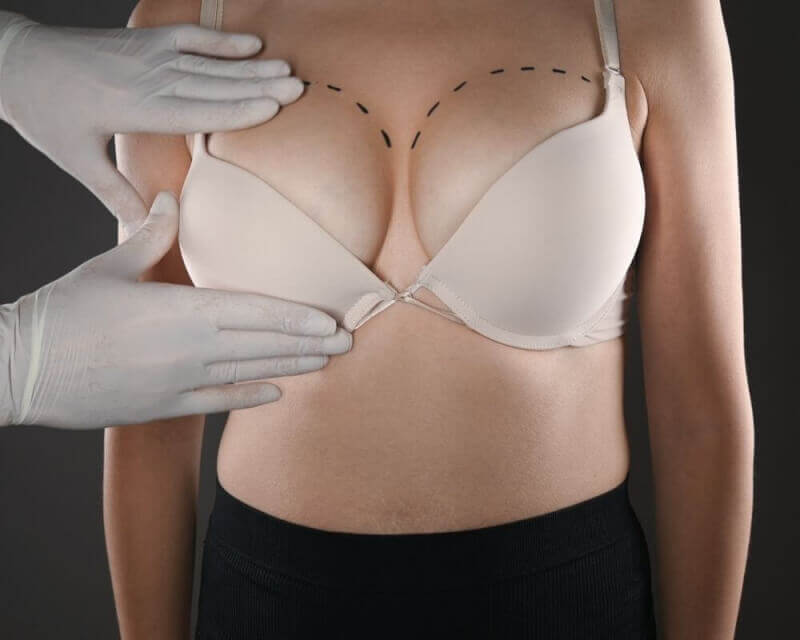What is breast augmentation surgery?
Augmentation plasty, commonly referred to as breast augmentation surgery, is basically an increase in breast volume. In breast augmentation, which is a surgical procedure, the volume of the breast is increased by using breast implants. Thanks to these easily applied implants, breast volumes can be brought to the desired size of the patients.
The gold standard for implants used in breast augmentation surgeries are silicone gel prostheses. Some patients receive fat injections, one of the most popular applications of recent times. However, breast implants are preferred for a permanent effect.
In which cases is it applied?
Breast augmentation surgery is an operation performed on people over the age of 18. However, if there is a medical necessity, it can also be applied to people under the age of 18. Among the people who can undergo breast augmentation operation are the following:
- Those whose breast size is smaller than their body size
- Symmetry difference between the two breasts
- Loss of volume in the breast due to reasons such as childbirth
- Removal of breasts due to breast cancer
Who is it not suitable for?
Breast implants are basically a method applied to all women and men over the age of 18. However, there are some people for whom breast augmentation is not recommended. These people include the following.
- It is recommended that people who plan pregnancy have it done after pregnancy.
- Breastfeeding women are recommended to have it done after the breastfeeding period.
- It is not recommended for people who frequently gain and lose weight.
Which implants are used?
Various methods are used to increase the volume in breast augmentation operations. Among these methods, adipose tissue is in the first place. In these operations in which fat tissues from the patients' own body are used, the donor tissue is the fat tissue located on both sides of the abdomen. The removed fat tissues allow the breast to reach its planned volume. However, in order for the transplanted fat tissue to be permanent, vascularization must also be ensured. This is usually done in combination with stem cell transplantation.
Another filling method applied in breast augmentation operations is implants. The implant consists of 2 parts, the first part is called the sheath and gives the implant its shape. The second part is silicone gel or saline. These are fillers that add volume to the implant.
Surgery process
Breast augmentation surgeries require an incision in the breast to place the implant. The location of the incision varies according to the implant to be applied and the method. The places where the incision will be opened are as follows.
- Around the nipple (periareolar)
- Fold under the breast (inframammary)
- Under the arm (axillary)
After the incision is made in the appropriate place, the breast tissue, connective tissue and muscles must be separated from each other to insert the implant. The implants are placed under the outermost muscle tissue in the chest. In order to do this, a pocket is made in the mentioned area. The implant is then placed in this pocket. At this stage, silicone gel implants or saline implants are used. In the case of saline implants, saline is injected into the implant after the sheath is placed in the pocket.
Before closing the incision, the nipple is centered and an aesthetic appearance is achieved. Afterwards, sutures are applied to close the incisions and skin adhesive is used. To protect the incision site, bandaging is done with surgical tape. Care should be taken in choosing the incision site to minimize scar tissue.
How is breast size decided?
When deciding on breast size, the patient and the doctor should make a joint decision. The factors that are effective at this stage are as follows.
- Characteristics of the patient's chest wall
- Thickness of breast tissue
- Dimensions of the breast base
- Asymmetry between breasts
- Location of the breast on the chest wall
How does the previous process work?
Before breast augmentation surgery, planning should be done with a plastic surgeon. What is important at this point is the breast characteristics of the patients as well as their preferences. At this stage, the doctor and the patient will proceed to the next step by determining the best option for the patient's breast characteristics.
Smokers are advised to quit smoking before breast augmentation surgery. In addition, medications used regularly should also be reported to the physician. If patients are taking blood thinners, they should stop this medication before surgery.
The night before surgery, patients should stop eating and drinking in the middle of the night. This point is extremely important especially to avoid any problems during anesthesia.
In addition, there are some points that patients should think about before deciding to undergo surgery. Among these points are the following.
- Breast augmentation is not a procedure to eliminate sagging breasts. If breast sagging is also a problem, then breast lift, called mastopexy, should be applied in addition to breast augmentation.
- Breast implants have a lifespan of 10 years on average. At the end of this period, implants may leak or rupture, although this is rare.
- In addition, weight gain or loss of patients after surgery will cause a change in the shape of the breasts. Of course, aging is also among the reasons that cause shape changes in the breasts. For this reason, other surgical interventions may be required in the future.
- In addition, mammogram interpretation is much more challenging for people with breast implants. For this reason, additional tests may be ordered in addition to the mammogram.
- In general, insurance does not cover breast augmentation operations and implants. However, some insurance companies may cover medical conditions such as breast removal after cancer.
How is the process after the surgery?
Although the scars caused by the incisions made during breast augmentation fade over time, they may not disappear completely. It is also normal for patients to experience pain, swelling and bruising in the breast tissue for the first few weeks. Apart from this, the following awaits patients after breast augmentation surgeries.
- During the healing process, a tight bandage or sports bra must be worn continuously to keep the implants in place. The physician will advise the most suitable bra for the patient.
- In order to control the pain after surgery, only painkillers prescribed by the doctor should be used properly.
- The tension, edema and skin discoloration seen after the surgery begin to disappear within 7 days. Therefore, movements become easier.
- In returning to daily life, the surgeon's recommendations should be strictly followed. If you do not have a job that requires you to work physically, you can return to work after a few weeks.
- A follow-up appointment is needed if the incisions are closed with non-absorbable sutures or if a drain is placed in the chest.
- Raising the arms after surgery can be difficult for patients.
- Tenderness, itching, tightness and weakness in the chest are to be expected.
- If warmth or redness is noticed in the chest after surgery or if the patient develops a fever, a doctor should be consulted as soon as possible.
Risks of breast augmentation surgery
Every surgical procedure comes with some risks. For this reason, breast augmentation operations also carry some risks. These risks include the following.
- Implant leakage or rupture
- Scar tissue causing distortion of the shape of the implant
- Changes in sensation in the nipple and breast
- Infection
- Breast pain
Additional procedures are required to eliminate these complications after surgery. In addition, although rare, breast implants can also cause anaplastic large cell lymphoma.
What should be considered after surgery?
After the surgery, patients receive a certificate of the implant used. This certificate must be kept for as long as the implant is used. In addition, among the points that patients should pay attention to after surgery are the following.
- Patients can start liquid nutrition 4 hours after surgery.
- Patients who tolerate liquid nutrition can be fed with light foods such as breakfast 6 hours after surgery.
- All dietary restrictions are lifted the day after surgery.
- Hospitalization is for one day. Some patients can be discharged on the same day.
- Activities that increase blood pressure should be avoided for 2 weeks after surgery. During the healing process, the chest area is sensitive to physical contact or shaking, so care must be taken.
- A sports bra should be worn for 3 weeks after surgery.
- Shower can be done 3 days after the operation, in consultation with the doctor.
- After surgery, patients should not push things or do anything that requires strength with their arms.
- Due to the risk of bleeding, medications such as blood thinners or aspirin should not be used for 10 days after the operation.
- Excessive physical activity and housework should be avoided in the first month after surgery. However, patients can start walking after 2 to 3 days.
- Patients should not do heavy sports such as fitness and swimming for the first 8 weeks.
- Massage should be avoided for the first 4 weeks after surgery. Afterwards, it can be done with the recommendation of the surgeon. However, care should be taken during the massage.
- The first 6 mistakes after the surgery should be avoided in sauna or solarium.
Breast augmentation with fat injection
Breast augmentation operations are generally performed for aesthetic purposes. Therefore, the results should be meaningful and stable. The method that offers these features is breast implants. However, fat injection is also applied to some patients for this procedure. Among the reasons why implants are preferred more than fat injection in breast augmentation operation are the following:
- If fat tissue is used in breast augmentation, fat tissue may be mistaken for cancer tissue in radiologic examinations.
- Since stem cells are also injected with fat tissue, it can cause rapid growth of cancerous tissue in the breast that has not yet been discovered.
- Fat tissue must be sufficient for the breasts to reach the desired volume. For this reason, the probability that a person of normal weight does not have enough fat tissue to grow breast tissue is extremely high.
- After breast augmentation with fat tissue, approximately 50% of the breast tissue is lost. It is therefore more difficult to control the outcome.
In addition, fat injection to strengthen breast repair in patients whose breast tissues are completely removed in breast cancer treatment provides much more positive results.







